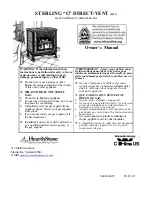
3
Safety precautions
■
The user should have an appreciation of the contents of this manual, and be familiar
with safe workshop practices.
■
Ensure that the machine operates at the correct supply voltage. If the heater has been
supplied without a plug the connection to the power supply should only be made by a
suitably qualified person. Pay close attention to voltage, amperage, and cycle times as
indicated on the unit’s faceplate
■
Do not use or store the heater in humid environments. Induction heaters are designed
for indoor use only.
■
Use proper handling equipment, appropriate for the weight of the workpiece or crossbar/
yoke.
■
Never support parts with a metal cable or have anything metallic hanging in the
proximity of the magnetic field. Extremely high currents can flow through the cable,
causing the cable to heat up.
■
Do not hold metal objects near the crossbars/yokes and poles.
■
While heating, keep at least 1 metre (3.3 ft) distance from the heater.
■
Never remove the crossbars/yokes during the heating cycle.
■
Do not modify the heater and do not use self-fabricated crossbars/yokes.
■
Always check that the crossbar/yoke is correctly adjusted to the poles otherwise,
excessive vibration may occur.
■
Only switch the machine on when the crossbar/yoke is positioned correctly.
NOTE:
Since our products are subject to continuous improvement, we reserve the right to
make changes.
CAUTION!
■
Induction bearing heaters work due a magnetic field. Please always keep at least
a meter (39 IN) from the unit during operation. Bear in mind that this can influence
electronic equipment, e.g. watches, magnetic charts etc.
2. Application
2.1 Application (SC110V, BC and BCS models)
Induction heaters are designed to heat bearings, bushings, gear wheels, couplings or other
metallic workpieces which form a closed electrical loop. This facilitates mounting where an
interference fit is required. Generally, it is not possible to mount a larger bearing onto a shaft
when it is cold so, a differential in temperature (150 – 160 F, 90 C) has to be undertaken to allow an
accurate fit. One part can be heated (to expand), one part can be cooled (to shrink) or, one part
can be heated AND the other cooled. This creates a size differential for a precise placement of


























